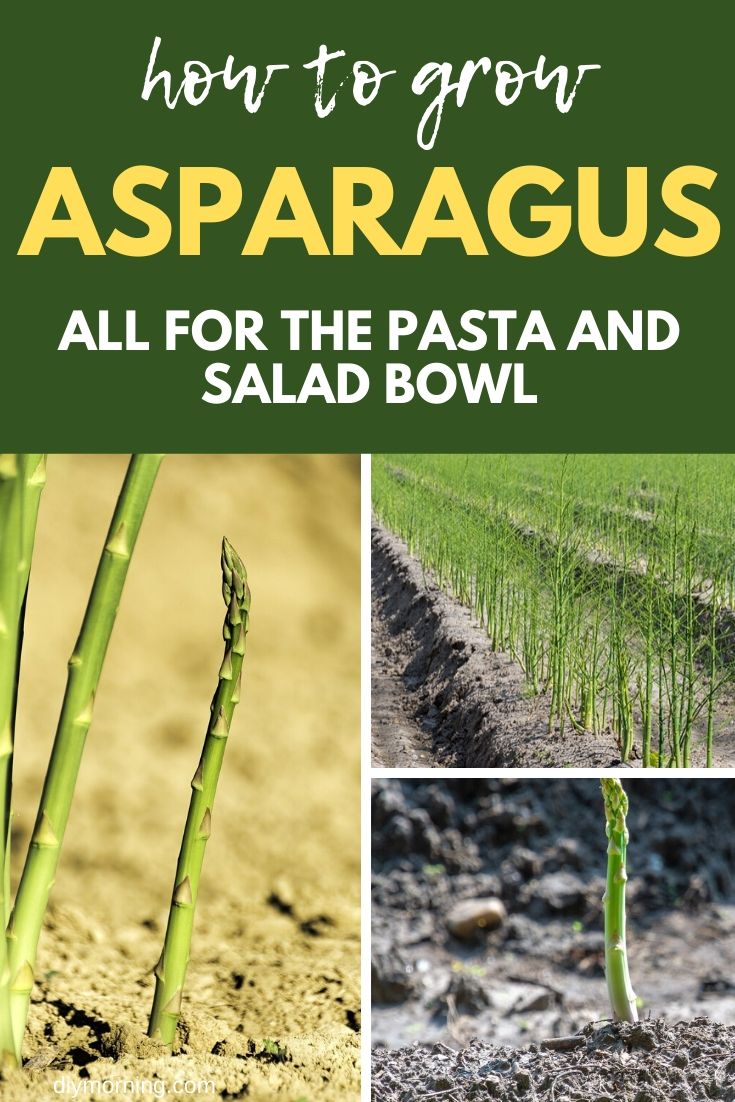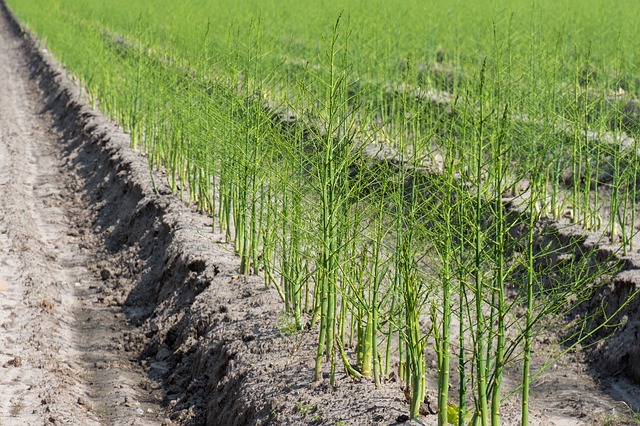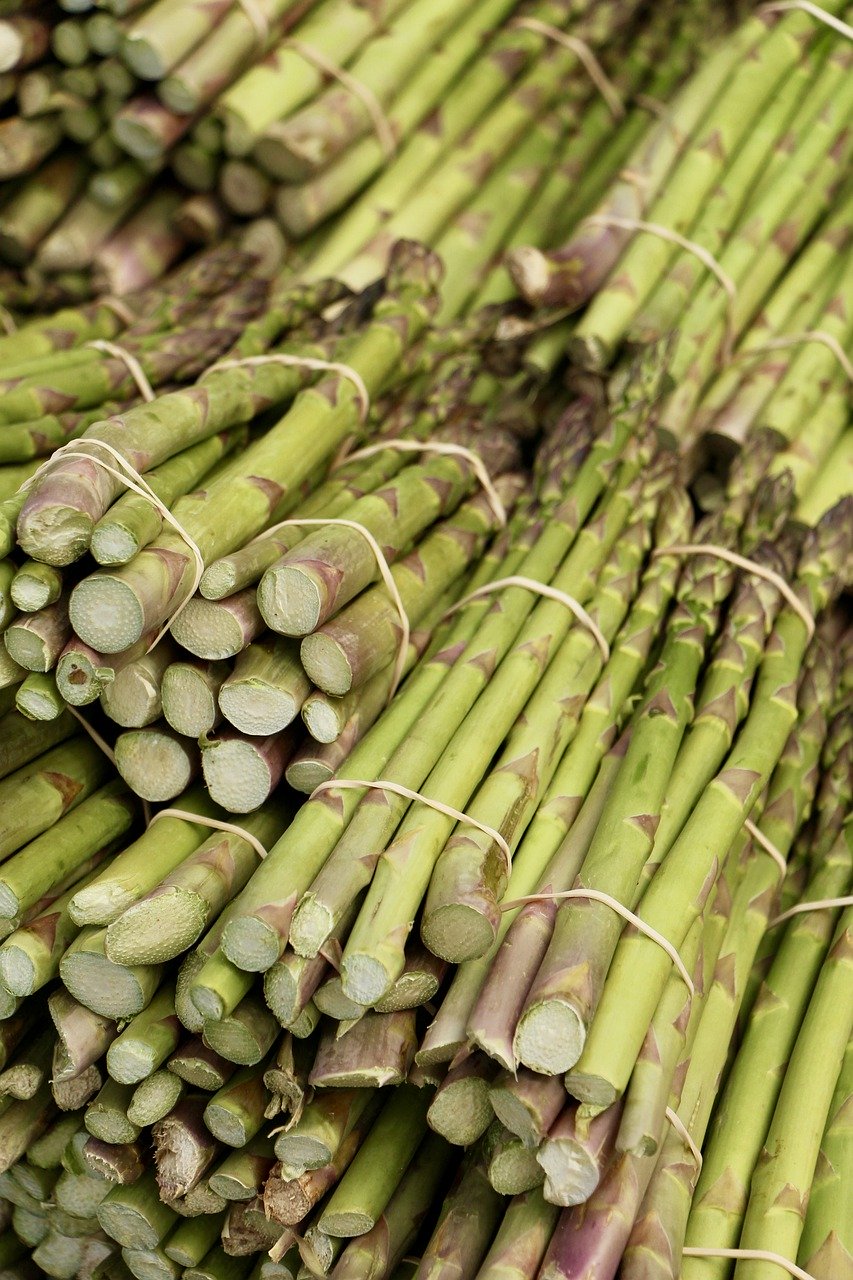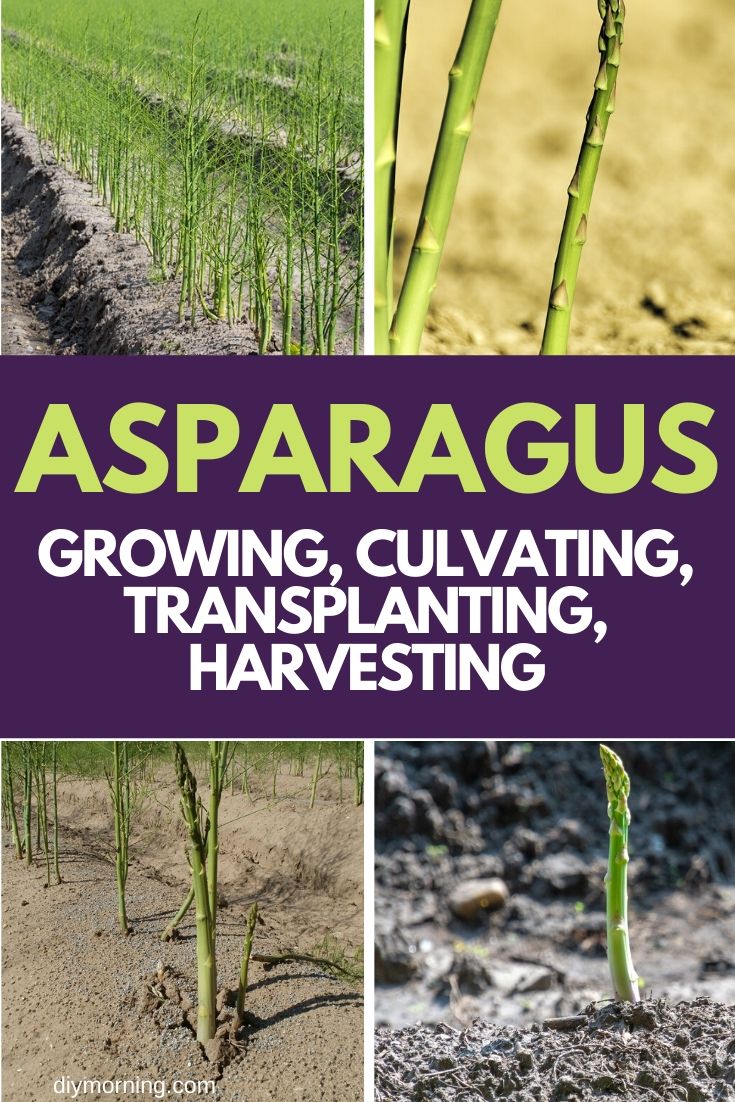As a protein-filled vegetable, asparagus is a staple ingredient for our favorite salad bowls and olive oil based pasta.
Growing asparagus could be in handy but it could also be very tedious if you do not know the whole process to do this. So today, we will give you a rundown of how to grow our favorite salad bowl ingredient, asparagus.
Table of Contents

Important growing considerations

Before you grow your own asparagus you must first understand that it follows certain growing considerations such as when is the best time to plant it and what type of asparagus offer greater yield.
Asparagus thrive better in very dry climates or in areas with below freezing point temperatures. Mild climates or the tropics are not viable climates for this veggie.
In terms of the asparagus type, much preference is given to male asparagus because they grow more spears than female asparagus who grow lesser spears because they also have to produce seeds. Thus, if yielding is more important for you, plant an all-male asparagus in your garden bed.
Planting asparagus

The most important thing is growing your asparagus because they will stay there for 20 years. Yes, you read that right. It may take years before your asparagus garden bed will produce a stable supply for the next two decades.
You need to have a soil bed that is at least 4feet wide. It must be placed where full sun can be received to minimize pest and disease infestation and produce healthy asparagus stalks.
The soil where it will be planted should be particularly light so that it would warm up easily during spring and colder seasons and to ensure that it will drain well.
Next, choose if you will plant from seeds or asparagus crowns. One year old crowns are the best choice to plant because two year old and beyond crowns may experience high transfer shocks making them unable to produce a good amount of yield. As for seeds, you may experiment on female, male or mixed seeds.
After preparing the soil bed, you must soak the asparagus crowns/seeds in lukewarm tea for at least 20 minutes. Make sure that the soil is sandy. Dig up trenches that are at least 12 inches wide and six inches deep at the center of the soil bed.
Plant the crown/seed at 2-3 inches deep and with a space of two inches apart. Cover the soil bed with 2-3 inches of soil.
After two weeks, add another two inches of soil and continue to do so periodically until it looks mounted above surface level to ensure that the planted seeds/crowns have settled.
Cultivating asparagus

In the first two years of planting, you will have to cover the soil bed with enough mulch every now and then to impede the growth of weeds which will compete with the young crowns, hence, affecting yield.
If weeds persist (and surely they will), remove them carefully so that the delicate crowns won’t be affected. It will need regular watering in the first two years. After this phase, their roots are already sturdy and they will crowd out the weeds so watering will be less.
Fertilize with compost tea or liquid fertilizer during spring and fall. In the winter, cut and leave winter-killed foliage and add with dried straw and mulch to give winter protection to the whole soil bed. If fern-like foliage appears, remove them before the onset of new foliage in spring as it could be a nesting site of pests and other diseases.
For those who grew asparagus using seeds, transplant the male seeds to permanent soil beds after they flower. Female asparagus usually has three-lobed pistils while male asparagus have larger flowers and longer stems.
Transplanting asparagus

Transplanting the asparagus can happen due to two major reasons: you want to permanently plant male asparagus in a soil bed or you want to propagate asparagus in pots.
Early spring is the best time to transplant asparagus. You must have prepared beforehand the new plant site since freshly dug asparagus will wilt if not planted immediately. Cut them by the root and look for the crown. If roots become too tangled, gently cut them apart. Follow the same process of planting as have been mentioned above.
Harvesting Asparagus

Harvesting within two years of planting is a big no for asparagus. You must first allow them to establish sturdy roots before you could start harvesting.
In the third year, you may now start harvesting in straight four weeks.
In the fourth year, you can now extend harvesting for eight straight weeks and during spring after the fourth year, you may now pick asparagus twice a day to keep the production at pace.
Conclusion

In conclusion, asparagus growing is not an all at once thing. It takes a lot of years and patience before it could produce the asparagus that we all dig for. If you are careful and patient enough, you are sure that you will have a stable supply of asparagus for the next twenty years. So basically, the trick here is to just follow the growing process and be patient.




